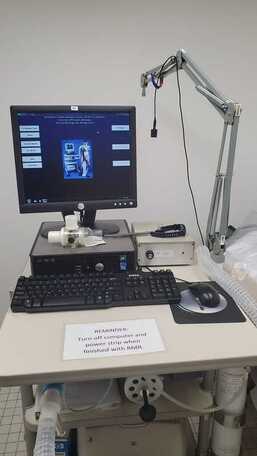
I'm fortunate to have health-minded friends who encourage my own wellness and fitness journey. Recently, one directed me to Scott Strath, PhD, ASCM Fellow, Professor and the Director of the Kinesiology Graduate Program at UW-Milwaukee's College of Health Science. Dr. Strath's primary research revolves around physical activity and public health. According to his curriculum vitae, specific interests include the relationship between physical activity and cardiovascualr health, physical activity promotional strategies, physical activity assessment, physical activity epidemiology, community and national physical activity patterns, and environmental determinants of physical activity. His research and publications are numerous as well as his honors and awards over his 20 year career at UW-Milwaukee. In addition, his effort to apply for grants in his field of kinesiology, exercise, and health science has resulted in UW-Milwaukee receiving medical technology necessary for extensive research on a range of participants from college athletes to senior citizens. One of the values and goals of this research laboratory is community outreach. I don't think there has ever been a time in history in which Dr. Strath's work is more necessary and valuable to the community. To see the services offered at the lab, please use this link: uwm.edu/pahrlab/services-facilities/
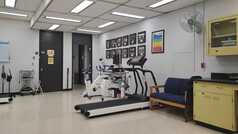
If you are like me and curious as to your metabolic rate, bone density, skeletal muscle composition, or perhaps concerned about whether you might have an accumulation of visceral fat, this UW-Milwaukee laboratory can provide you with the information utilizing criterion standard state of the art testing equipment. Often the testing will be conducted by PhD students however I had the good fortune of being paired with Dr. Strath. The nominal fee of $75/test includes interpretation. Because the equipment is provided through federal grant money, the college is able to maintain reasonable testing fees and the money is directed to support PhD students on travel fees associated with research, conferences, and presentations. These tests at a medical facility would be upwards of $1500.00. Dr. Strath booked 2 hours to meet with me for 2 tests at the Enderis Building on campus. Word to the wise, allow 70 minutes if commuting from West Bend!
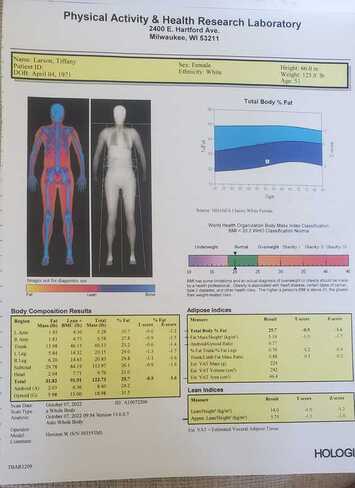
Upon meeting, we discussed my general motivation for reaching out to the lab as well as the testing process. From my work as an occupational therapist as well as a Pilates instructor, I am acutely aware as to the physical effects of aging. As Dr. Strath confirmed, even if we exercise, eat well, prioritize sleep, and focus on nutrient dense foods, our body will still age! At different times in our lives, we may adjust our work-out regimen to better address our needs. There was a time when my cardio fitness and distance running felt purposeful to my health. Today, long-distance running is not nearly as important as maintaining muscle mass and a consistent resistance training program. Sarcopenia, the loss of skeletal muscle, is a concern for most adults however its effects are more apparent in the 50+ population. Particularly for women, the hormonal changes that occur in peri-menopause signal a reduction in estrogen and testosterone. These hormones are instrumental and protective in maintaining muscle mass. As these hormones decrease we tend to lose muscle mass more rapidly. Likewise, osteoporosis is equally concerning for women however insurance often does not cover bone density tests until 65 years of age. Identifying your risk factors or providing yourself assurance that your current trajectory is optimal for bone health, allows you to adjust your lifestyle habits appropriately.
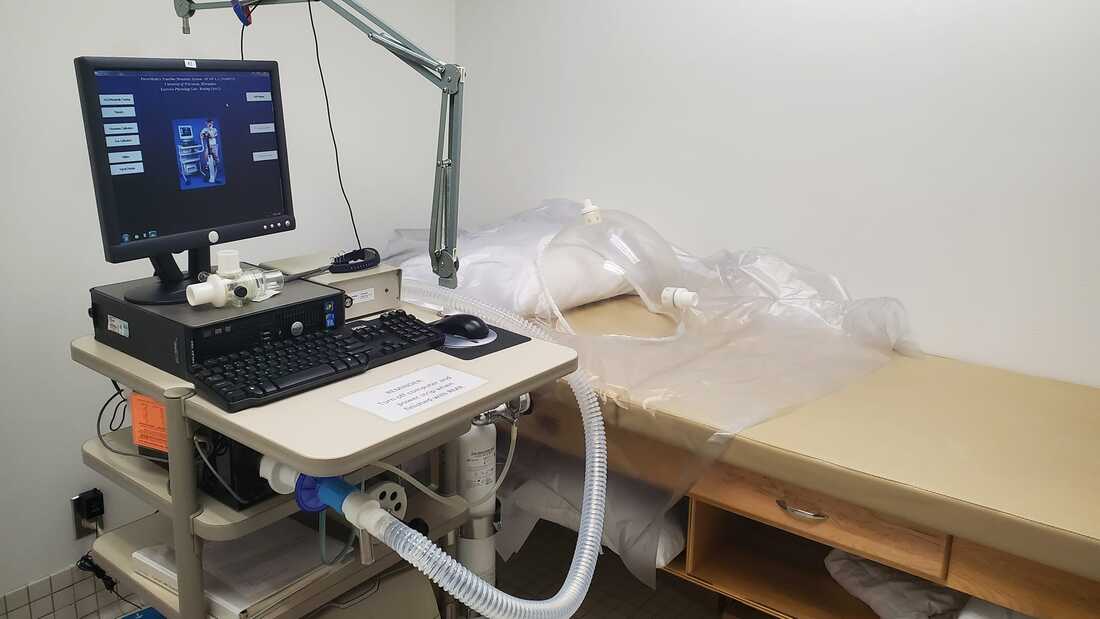
The first test I did was the Resting Metabolic Rate. After measuring height and weight, I went into a small lab room to prepare for the easiest test ever! Simply lie still for approximately 15 minutes and allow your body to find a relaxed calm state. After an early commute in heavy traffic I was happy to oblige with a 15- minute savassana! Dr. Strath places a plastic hood over your head and chest which is attached to a large tube which connects to the testing apparatus. Over the course of approximately 12 minutes, the test measures VO2, the volume of oxygen your body utilizes each minute and VCO2, the volume of carbon dioxide that you breathe out. Through a specific formula, your resting metabolic rate can be determined. In addition, the results give insight into your overall metabolic flexibility. Do you predominantly burn carbs or fats? When fasting, is your body adaptable enough to burn body fat as fuel or do you find yourself "hangry" because your body relies too heavily on that glass of orange juice or bagel for fuel? This relates to a complex topic regarding enzymatic pathways and mitochondrial function which you can research on your own! Simply put however, metabolic flexibility signals your body's adaptability to use a variety of nutritional sources as fuel. Being metabolically flexible is an advantage to your health.
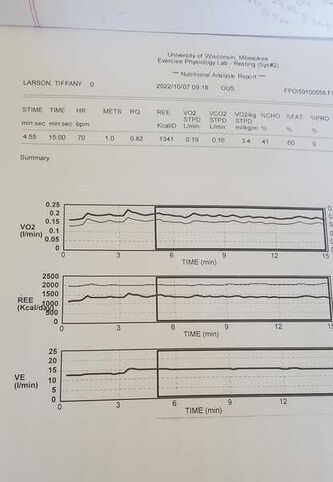
Through this test, it was determined that I need approimately 1300 calories a day at rest just for my heart to pump, my lungs to breathe, and my brain to function. That is my resting energy expenditure or REE and my age, gender and body weight are the main determinants of total energy expenditure. If I factor in my work-outs/activity level plus food induced thermogenesis then I could estimate that I need approximately 2000 calories/day to maintain my current weight. (There are many apps/programs that can help you with this equation.) Surprisingly, my RQ or Respiratory Quotient was exactly what Dr. Strath recommends as an ideal goal or outcome to his students, 0.82. The RQ is an indicator of which fuel (carb or fat) is being metabolized to supply the body with energy. In my case it is approximately 60% fat and 40% carb; a comfortable mix. If your RQ was above approximately .91, you may be more at risk of diabetes as these results would indicate you are primarily a sugar burner. But...I am not the one to explain these results. Most of it was over my head which is why I was delighted to have someone of Dr. Strath's expertise explain my outcomes at a basic level. In addition, Dr. Strath is not a medical doctor and makes it clear that his interpretation should not be construed as medical advice. As always, none of the above is medical advice but rather simply my experience which I record for my own recollection as well as for your general curiosity.
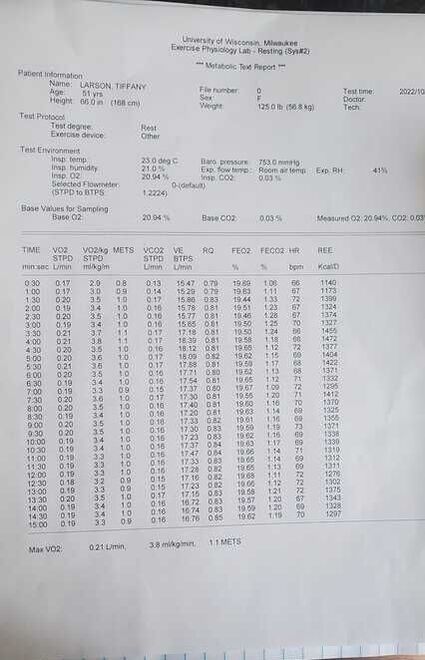
Due to the length of this first post, I will share the results from my DEXA bone scan and body composition later..it's a college football Saturday! I hope this post helps you to understand that objective tests are available to support your wellness efforts without the high fees that accompany medical facilities. This is part of preventative health care. Knowing my resting metabolic rate and pairing it with body composition I can better determine how to maintain my body in isocaloric balance, my energy/calories in equals energy/calories out. If I need to increase lean muscle mass (most women do) or if my activity levels increase, I might decide to increase my caloric intake, particularly protein to build more muscle. The RMR test provides data that may be instrumental in determining the ideal nutritional composition for your daily diet. Thanks for reading!
 RSS Feed
RSS Feed